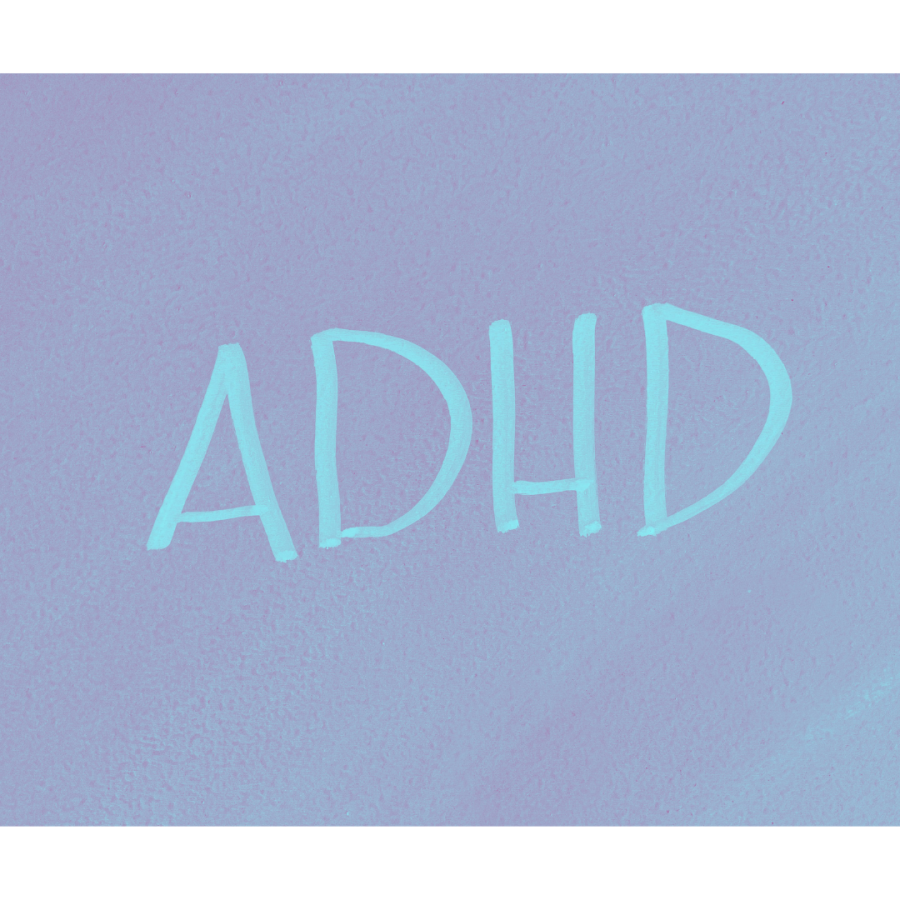The Underlying Symptoms of ADHD
December 19, 2022
ADHD, or Attention Deficit Hyperactivity Disorder, is one of the most common neurodevelopmental disorders. According to the CDC, about 6 million (9.8%) of America’s adolescents have been diagnosed with ADHD, alongside around 4.4% of adults. However, the main problem with ADHD is not the number of people who have been diagnosed, but the number of people who haven’t been. It is estimated that less than 20% of those with ADHD have been officially diagnosed, and of that, only about a quarter reach out for help.
ADHD is interpreted by many as simply being energetic and distractible, and while this isn’t wrong, it is only a fractional perception of ADHD’s impact. Common symptoms include distractibility, forgetting/losing things, having a short attention span, poor time-management, indecision, difficulty finishing tasks, impatience, low concentration, fidgeting, and overall inattention.
Going off of these symptoms, parents/guardians typically identify ADHD in their child by looking at their performance in school. For example, if a kid is struggling to sit through lessons, this will reflect in their school work. The problem here is that people often mistake poor academic performance as being a ubiquitous symptom, which is different.
There are certain effects of ADHD that go beyond inattention. These effects are not necessarily a diagnostic feature, but they are still very prevalent in a person with the disorder. Because of this, a person can simultaneously have ADHD and good grades, but their ADHD would likely go unnoticed and untested since it doesn’t perfectly align with most people’s partial definition of the disorder.
Rectifying society’s broken understanding of ADHD is an imperative endeavor, starting with identifying some common but often under-discussed effects of the disorder.
Irritability and mood swings
An analysis of ADHD studies found that 85% of people with ADHD can feel higher levels of frustration than those without it, 70% have higher levels of impatience and excitability, and 38% experience emotional lability (quick and exaggerated changes in mood). While ADHD is mainly a cognitive disorder, it intertwines with the ability to regulate and manage emotional responses and behaviors. In other words, it leads to a lack of control over a heightened sense of emotion.
Those with ADHD are likely to grow frustrated easily, often over minor inconveniences. Commonly, those with ADHD will have angry outbursts but regain composure within a few seconds or minutes and immediately apologize. The emotional instability ADHD ensues often leads to intensified mood swings that confuses both the person experiencing it and those around them. Disposition to emotional dysregulation makes irritability and mood swings a very common effect of ADHD.
Anxiety and Self-Esteem Issues
Having ADHD makes a person more susceptible to coexisting mental disorders, one of the most common ones being anxiety. Around 30% of children and 53% of adults with ADHD also suffer from an anxiety disorder. The heightened sense of emotion ADHD creates often results in an anxious, distressed feeling over casual circumstances, especially social situations. Specific symptoms of ADHD, such as impatience and inattention, can weaken communication skills. Because of this, kids and adults with ADHD often panic at the thought of social outings, no matter the causality of it.
In addition to this, ADHD, especially undiagnosed, often causes insecurities and self-esteem issues. While young kids with the disorder may have not yet developed these issues, teens and adults with ADHD grow a well-developed and often flawed perception of themselves, causing them to hyper focus on how they are perceived in social situations. These insecurities give those with ADHD a fear that everyone around them is well-aware of their struggles and judging them for it, fueling the social anxiety. So, while anxiety is not an official diagnostic feature of ADHD, the link between the two disorders are very common and strong.
Sleeping problems
It is common for those with ADHD to have sleeping problems and conditions. ADHD causes high-energy levels and hyperactivity, making settling down enough to fall asleep an issue. A person with ADHD may be stuck reliving the events of the day or deep in thought over something, or they may feel the drive to partake in certain activities despite it being time to go to sleep.
It is believed that ADHD disrupts the standard circadian rhythm, thus messing with a person’s ability to fall asleep at a reasonable time. ADHD also causes light and disrupted sleep, causing the individual to wake up multiple times throughout the night. These combined make waking up a very challenging course of action, causing oversleeping, missing alarms, and falling back asleep after waking up. These sleeping problems intensify the person’s struggles throughout the day, impacting them further in school/work and leaving them with certain swings of exhaustion and fatigue.
Creativity
It is common for people with ADHD, especially children, to abide by their own morals and rules. If a person with ADHD does not understand or agree with a rule, they likely will not follow it. This dislike of constraints and preference for being self-driven plays strongly into a creative mindset. Those with ADHD are more likely to pursue and thoroughly enjoy creative and innovative tasks. Multiple studies have been done proving those with ADHD have a stronger sense of divergent thinking and conceptual expansion.
This can also provide an additional explanation to the common low school performance of those with ADHD. School and assignments undeniably constrain creativity because it regulates learning. Placing restraints upon tasks causes those with ADHD to lose motivation and drive toward the concept. It is common that those with the disorder perform poorly on tests (especially standardized ones), but do well on projects or essays. This creativity can also build a hyperactive imagination. Daydreaming and ‘dozing off’ or ‘zoning out’ is something most children and a lot of adults with the disorder fall guilty of.
When compared to other, more intense, and statistically detrimental mental disorders such as anxiety and depression, ADHD’s severity becomes mitigated. Because of this, people often isolate ADHD from other disorders, failing to take it seriously or learn the full extent of its effects. Society’s misunderstanding of ADHD has given it a humorous undertone, turning it into the punchline of a joke instead of a harmful neurological disorder. The common idea that ADHD lacks severity and should not be a concern fuels the level of difficulty it is to recognize within oneself. People will go years, oftentimes their entire childhood, without a diagnosis.
I was diagnosed with ADHD at the end of 8th grade. Once I was diagnosed, I started to learn more about the underlying effects of the disorder, but more importantly, I realized how many of them applied to me. So many aspects of myself that had caused me immense distress and insecurity had been given a source, and the knowledge that my problems were not without cause allowed me to gain a sense of self-understanding finally. In addition to this, it allowed me to begin experimenting with treatments and find a medication that enables me to focus properly throughout the school day without lacking emotion or comprehension.
Tying the connection between ADHD and other mental and behavior disorders allows for a full and accurate grasp of everything the disorder entails. ADHD looks different in different people, and that symptoms are personal and not all-encompassing. Recognition and diagnosis of ADHD are crucial because it brings about introspection and self-improvement, which is why it is important to rectify society’s false comprehension of ADHD.







